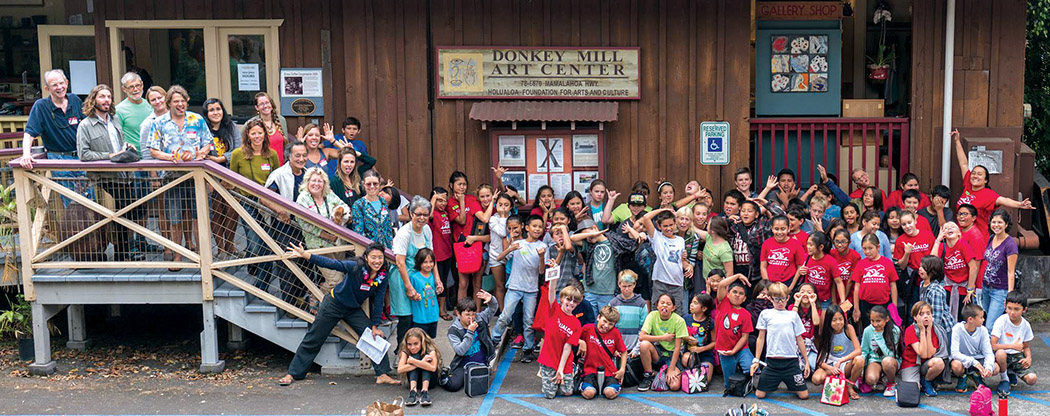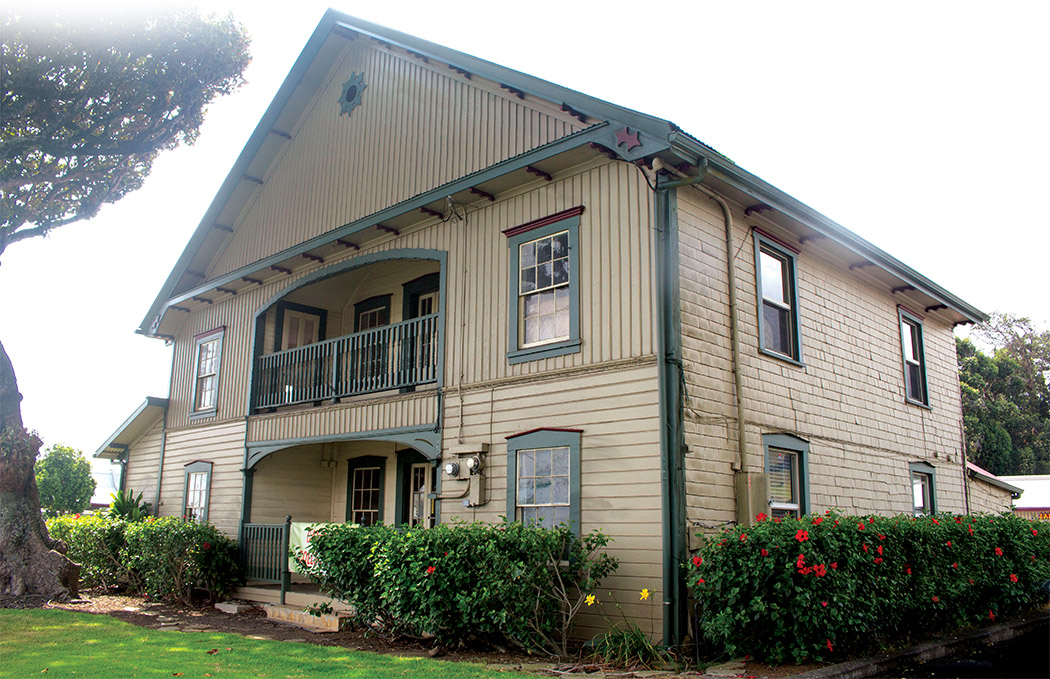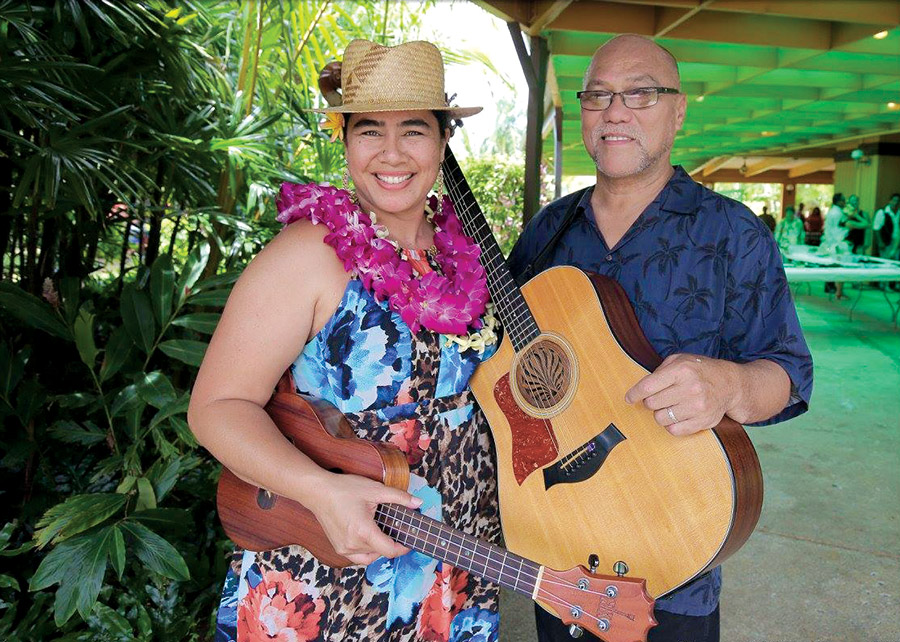
Kainani Kahaunaele: Revitalizing Hawaiian Music
By Mālielani Larish
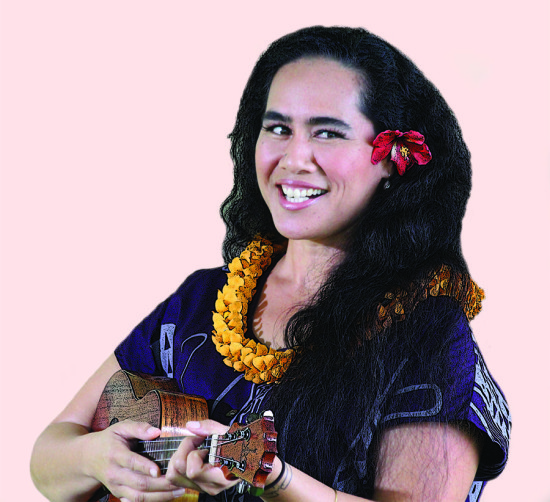
In 1999, after four months of sailing from Hawai‘i to Micronesia as a crewmember of the E Mau—Sailing the Master Home voyage, the day had arrived for Kainani Kahaunaele to give her gift to Mau Piailug. Papa Mau, as he was affectionately called, had spent the last 27 years teaching the art of celestial navigation to the peoples of Oceania—and this time he was home for good.
Surrounded by her voyaging sisters, captains, and crew, and confidently strumming her ‘ukulele, Kainani presented her gift: an honorary name song, E Mau E, composed in Hawaiian. In the song, she praises Mau as the “grandmaster navigator, recognized and honored in his own land.”
Eighteen years later, Kainani Kahaunaele’s distinguished career echoes the qualities that she admired in Papa Mau. Honored in her own land, Kainani works with a sense of deep responsibility to perpetuate the Hawaiian language, particularly through the art of Hawaiian songwriting and poetry. Winner of five Nā Hōkū Hanohano awards, Kainani is a sought-after performer whose original compositions have appeared in films, documentaries, and TV shows. As a lecturer at the University of Hawai‘i at Hilo’s College of Hawaiian Language, a wife and mother of three, and a musician, Kainani weaves the revitalization of Hawaiian language and culture into all aspects of her life.
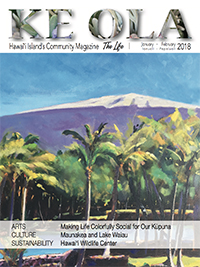
Born and raised on Kaua‘i, music expressed the language of the heart in Kainani’s family. Since she was the firstborn child in the family, her parents decided that she should be raised by her maternal grandmother. Per the customs of pre-contact Hawai‘i, paternal grandparents raised the firstborn boy and maternal grandparents raised the firstborn girl. The title track of Kainani’s first CD, Na‘u ‘Oe (You Belong to Me) voices her love and respect for her grandmother Kanani. Not only does this dazzling song embrace the listener like a lei of love, it highlights Kainani’s dynamic voice, which glides through vocal harmonies like a seabird in the wind.
Kainani demonstrates the Hawaiian tradition of celebrating one’s natal lands in Na‘u ‘Oe. The “Kalalea Medley,” for instance, melds two songs that everyone in her hometown of Anahola, Kaua‘i knew while she was growing up. Praising the famed Kalalea mountain that stands sentinel above Anahola, the medley combines a song written by the team of her great-great-great grandmother and her daughter and another song written by her great-grandparentsʻ next-door neighbor. The medley features Kainani’s mother, Lady Ipo Kahaunaele, a Kahu (Reverend), entertainer, and musician from Kaua‘i.
The compilation contains two other songs about the enchanting places of Kainani’s childhood; “Lei Wainiha” honors the verdant Wainiha Valley, abode of the Menehune and Mū people, and home to 32 named winds. “Hanohano Kalihi” describes the majesty of Kalihikai, where Kainani and the older women of her family fished by boat. Even though her elders rowed the boat and directed Kainani on where to fish, they always landed more fish than her by the time they reached shore.
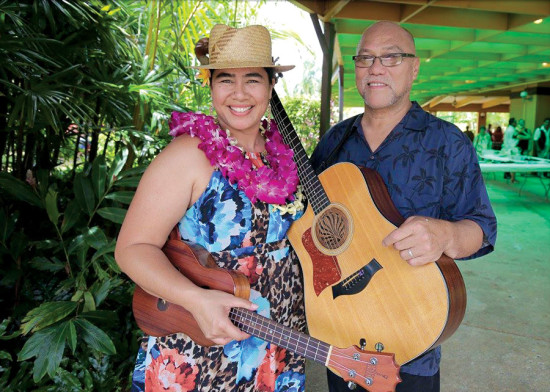
Although Na‘u ‘Oe features many traditional Hawaiian songs, a few of the songs sparkle with jazzy influences. In addition to four songs that reference Kaua‘i, the collection also includes a song written as a wedding gift, a name song written as a birthday gift for a friend, three songs written in English, two songs that reference natural elements and places of Hawai‘i Island, and a chant by Kaipo Frias (now Dr. Taupōuri Tangarō). Masterful guitar, ‘ukulele, and bass playing complement Kainani’s versatile and easygoing voice.
Na‘u ‘Oe was originally conceived as a curriculum tool for the ‘Aha Pūnana Leo preschools. ‘Aha Pūnana Leo runs 11 Hawaiian language immersion preschools on five of the Hawaiian Islands, and Kainani was hired by the nonprofit to work in the curriculum development house. At this dream-come-true job, Kainani’s boss encouraged her to create a CD that could inspire students to compose in Hawaiian and engage a wide audience.
“That was my lucky shot right there,” Kainani says of Na‘u ‘Oe, which garnered positive attention from music critics and the teachers and students that it was intended to serve. The CD earned her three Nā Hōkū Hanohano awards in 2004: Female Vocalist of the Year, Most Promising Artist, and Hawaiian Language Performance of the Year.
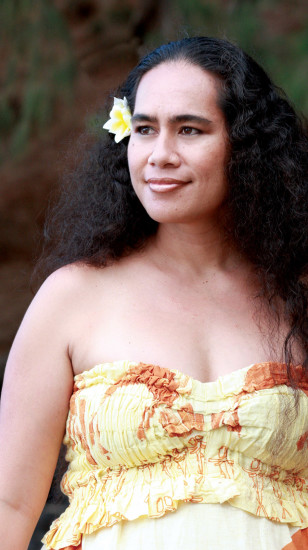
“I had a good pulse on how the music was being used in the community…the teachers would give me feedback, the community would, the children.” To her delight, the songs were reaching the targeted audiences; teachers from preschool all the way through high school used the songs in their lessons, and students were learning the songs by heart.
If the old-timers like her music, and if children ask to sing her songs for May Day, Kainani views these precious moments as her true measures of success. She prefers to sing at occasions of community significance, like ho‘olaule‘a (celebrations or festivals), hula competitions, fundraisers, weddings, funerals, and May Day programs, where her music supports the community.
“I’m not trying to be a famous musician; it is about trying to promote responsibility,” Kainani says, particularly in the realm of Hawaiian composition, or haku mele. In the art of haku mele, the song is “made up mostly of natural elements, and the relationship between the natural elements, which are really about people relationships,” Kainani says.
When Kainani spends time in nature, she tries to tune into the environment, asking herself “How is this breeze, this fragrance, and the sunshine going to be characters in my song? How is this feeling going to come out in the way I create the music?”
The word haku not only means to compose; it also means to braid or arrange, as in a lei. Thus, the haku mele poet deftly weaves together analogy, imagery, and metaphor, painting a picture that contains several layers of meaning. The casual listener misses the kaona, or interior meanings, of the poetry. For example, in Kainani’s jazzy number named “Makaki‘i”, the mist-laden lehua blossom represents a woman who is apprehensive about love and the famed Iponoenoelaua‘e wind, which is (derived from a legend involving the goddess Pele), represents the alluring lover.
In 2010, Kainani released ‘Ohai ‘Ula, a CD that reflects her experiences as a mother, wife, teacher, and world traveler. Her second CD offers several traditional songs written in the haku mele style, plus songs with a contemporary twist. The CD garnered Nā Hōkū Hanohano awards in the categories of Haku Mele and Hawaiian Language Performance.
One of Kainani’s mentors and teachers, Larry Kimura, instilled in her the idea that “We are not only going to speak Hawaiian, we are going to sing our songs better with greater understanding. We are going to promote it and teach it.”
Today, at the University of Hawai‘i at Hilo’s Ka Haka ‘Ula O Ke‘elikōlani College of Hawaiian Language, students receive a thorough understanding of traditional Hawaiian music in Kainani’s Hawaiian Music in Action Class. Kainani arms the students with a good batch of what she calls “foundational Hawaiian songs.” These are the songs from her grandparent’s generation that show the composer’s connection to the land, the songs that were sung by communities, the songs that are found on albums instead of CDs. She says that some students sign up for Hawaiian Music in Action thinking that they will sit back and listen to her lovely voice. Instead, students actively learn the songs and sing in two performances during the semester.
Kainani also teaches Beginning Hawaiian Language and Pana O Hawai‘i, a class that explores each moku (district) of the island through stories and songs. She urges her students to hold onto what they are learning, because each student plays a role in the revitalization and preservation of the Hawaiian language.

Furthermore, Kainani advises her students that learning Hawaiian songs can help them to increase their fluency in the Hawaiian language. Even though Kainani’s childhood experiences were liberally sprinkled with Hawaiian words, prayers, and songs, she didn’t learn the language fluently until she was an adult. Now she speaks Hawaiian all the time—at work, at home, and on the stage.
Although her musical career has required a great deal of responsibility and hard work, Kainani emphasizes that the journey has been fun. She has performed all over the world, worked with Hawai‘i’s most talented musicians, accompanied the finest hula dancers, and witnessed children, adults, and kūpuna (elders) singing and dancing to her songs in countless school and community events. She especially looks forward to trips to Japan with her fellow musicians. Between shows, she spends plenty of time backstage, talking story and jamming with Hawai‘i’s top performers and observing the evolution of the Hawaiian music industry.
Bringing it full circle, Kainani performed her E Mau E song for Mau Piailug as part of the Hōkūle‘a Homecoming ceremonies in June 2017 in Honolulu. Before the song, she gave a heartfelt speech in honor of Papa Mau, saying “We have so much kuleana (responsibility) to carry, and let us embrace that kuleana.”
Weaving her life’s purpose seamlessly into her work, her music, and her relationships, Kainani embraces her kuleana, a dedication that shines forth in her songs. ❖
To contact Kainani Kahaunaele: kainanikahaunaele@gmail.com
‘Ohai ‘Ula is available on iTunes and Amazon. Na‘u ‘Oe is available on CD Baby and Amazon.
